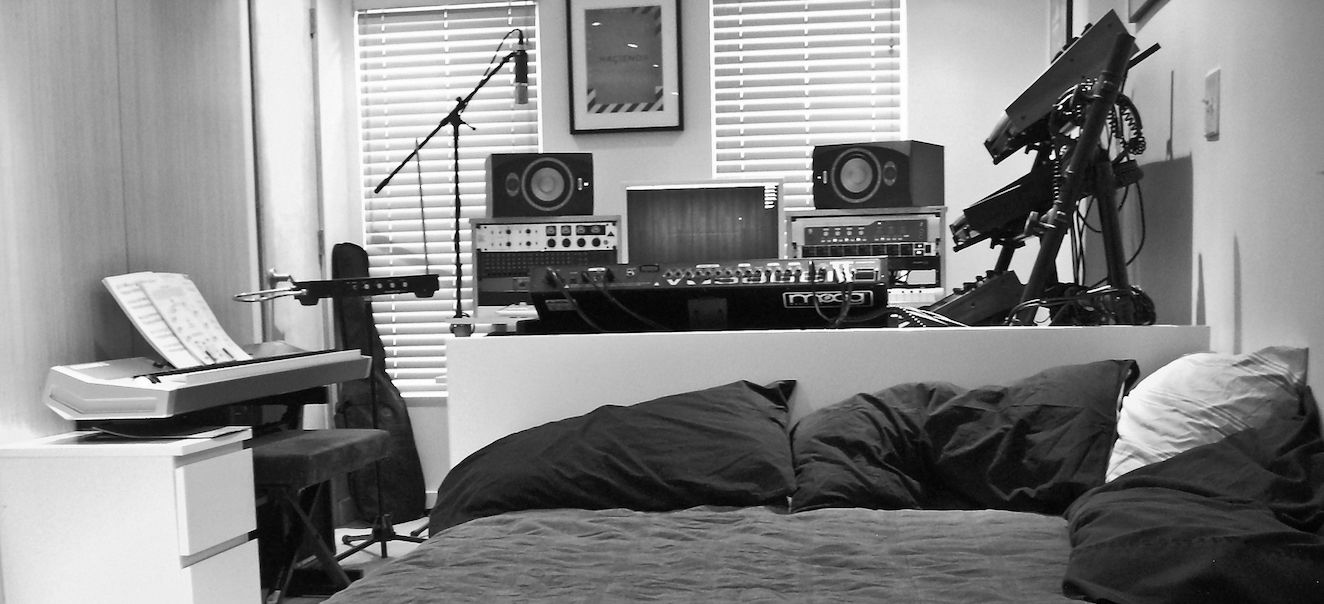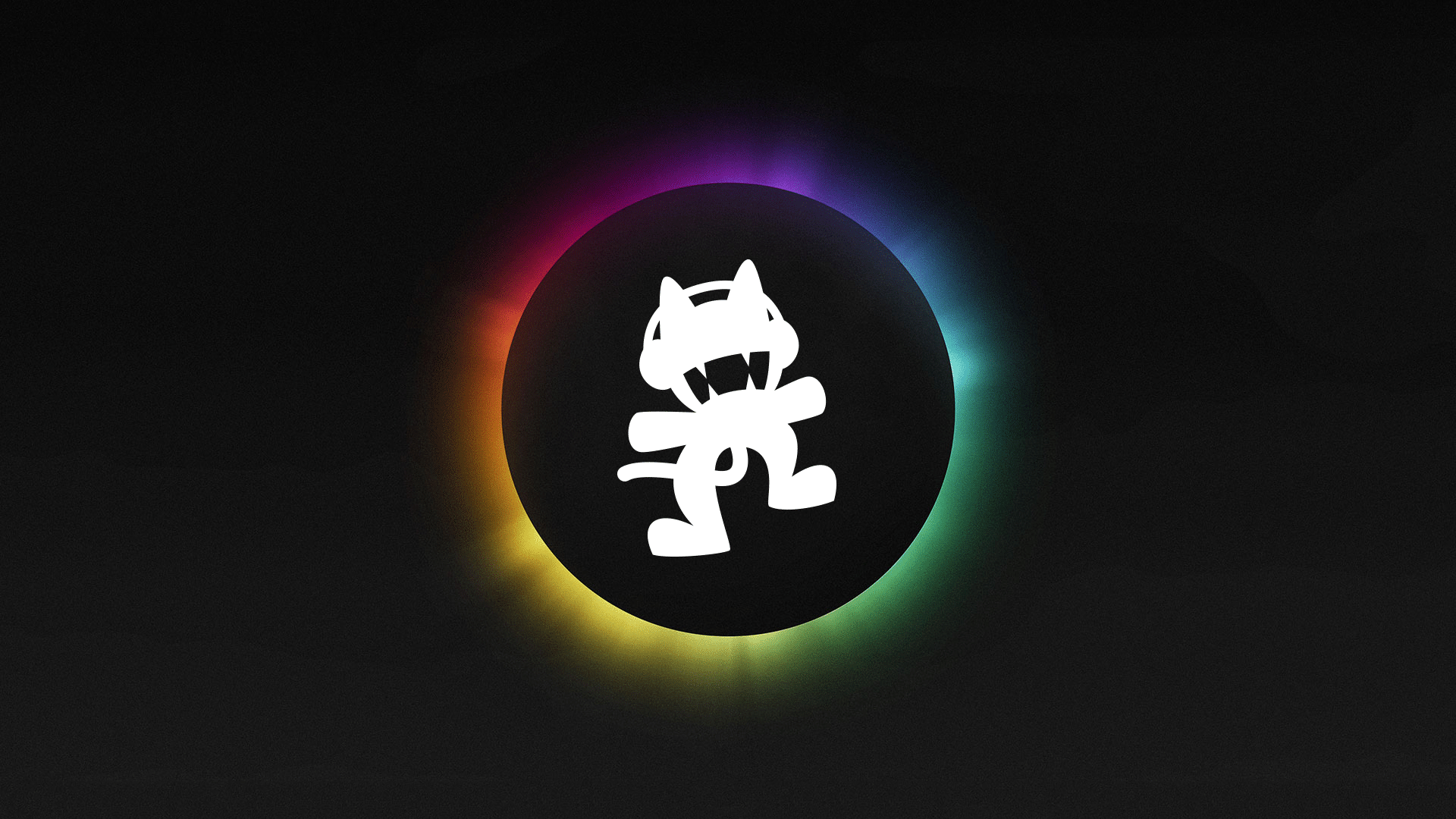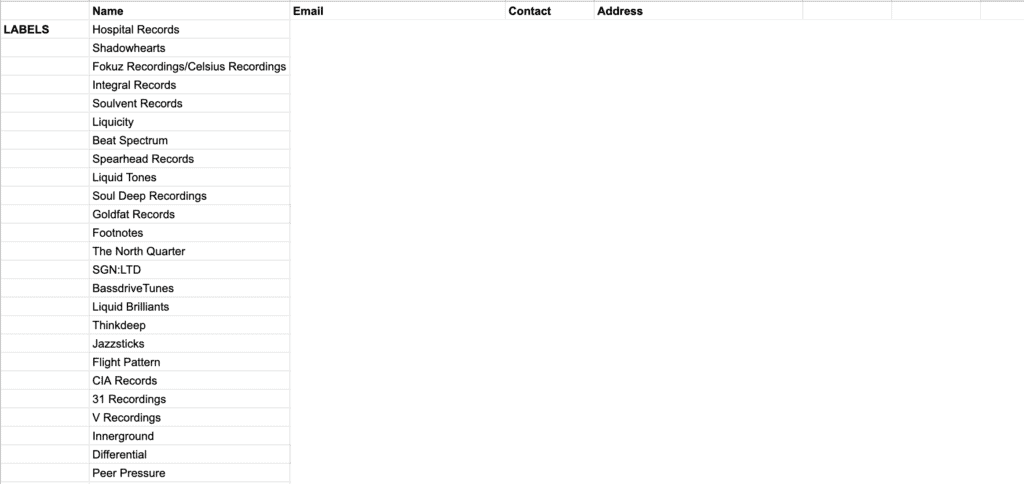What is a demo in music, and how do you submit them to your favourite record labels?
Maybe you’ve sent a few emails or DMs and have had no luck. You’re left sad because you’re not getting responses.
We’re here to fix that! Here’s my guide to submitting demos that have the best chance of getting read and listened to, based on my 10 years of producing music and sending demos.
I’ll dive into:
- The harsh truth about why your music is getting rejected
- Why your music is getting lost in a sea of submissions
- Three important things that will increase your music being listened to by 50%
- Why you should be developing relationships and not just sending demos
- Some secret hacks to almost guarantee that your email will be opened
- An example email template and why it works
Let’s get into what a demo is in music and how to submit them 👇
First Things First: What is a Demo in Music? 🤔
Before we dive into our step-by-step guide on how to submit demos, let’s clarify one question.
What is a demo in music?

A demo is an abbreviation for “demonstration”. Historically, it was a song recorded for limited circulation, or to be used as a reference. It was not meant for general public release.
Bands would get together and record songs with their own limited gear and mixing skills. They would then “shop” those songs to various record labels, hoping to get a recording contract.
Once they managed to get a contract, they would enter the studio with professional sound engineers, a producer, a mixer etc. They then re-recorded their initial demos so that they could be officially released.
In more traditional music genres (like rock or jazz), bands still refer to demos as “temporary”. But in the EDM world, demos have taken on a different meaning.
If you’re an electronic music producer, you are often the songwriter, producer, mixer, and even sometimes mastering engineer. Times have a changed, and “entering the studio” now often means sitting at a desk in your bedroom:

This means that the definition of what is a demo in music has completely changed. For electronic music producers, a demo is often your final product.
This is because the label won’t be financing any studio time of expensive engineer. So what you are sending them needs to be the best product possible.
There are however a few caveats to this:
- If a label accepts one of your demos, they will often ask for changes. These might be mixing-related (less sub-bass, more top end etc.) or even compositional (second drop not different enough from the first one, intro is too long etc.)
- Sometimes, you might only send half a song as a demo (intro + 1st drop for example). This is often enough to give the label an idea of what the track is about, and if they like it. This also allows you to write a lot more music, and finish only the track that are of interest to labels.
But now that we know what a demo is in music, let’s dive into the meat of the article 👇
Step 1: Write (Actual) Good Music
Wanna know why you’re getting rejected by labels?
Bluntly put, your music’s not good enough.
One of the biggest mistakes I see new producers make is sending their music prematurely to labels.
If you’ve been producing for 6 months, Monstercat isn’t going to sign you (unless you’re a god amongst men):

If you need to write good music, check out our courses and resources to get you going:
But how do you know if you’ve got (actual) good music? One word – feedback.
Gathering (quality) feedback is one of the most underrated skills you can develop as an artist. There are several reasons why feedback is crucial:
- Objectivity: being objective on a track you spent 100 hours on is hard.
- Fix problems: there might be glaring mixing issues in your track. Feedback can help detect them.
- New ideas and an opportunity to learn. Quality feedback can bring your track in a new direction. It can also highlight areas where you need to improve as a producer.
Wanna learn more about how (and where) to gather feedback? We explore everything you need to know in this blog post.
So you’ve got good music? Like, really damn good music?
I’m not kidding when I say I thought I had good music once upon a time. But when I look back, all the time I spent promoting my music was futile because it actually wasn’t good.
So, if you’re very sure… Proceed on.
Step 2: Choose The Right Label
Ok, so now you know what a demo is in music, and you’re producing quality music. One of the biggest hurdles you’ll face next is that …
Your music just isn’t the right fit.
When people get rejected, they often blame their music, the label or something else. But in reality, they’ve chosen a label that doesn’t suit their sound.
Majestic Casual isn’t going to sign a heavy trap record. Trap Nation isn’t going to sign your next hot lo-fi beat. Universal’s not going to sign your experimental ambient soundscape album.

This is where the quality over quantity approach works really well – choose a small number of labels (no more than 25) with ranging sizes as your ‘pool’.
This doesn’t mean you send every release to every label, but you can pick and choose the best for each track.
As a liquid DNB producer, this is my current pool:

From this list, I might have anywhere between 1-5 labels that I might want to send tracks to. I’ll start with one and work my way along from there.
If you’re a pop or hip-hop artist, you might want to target larger companies – even the big 4 labels (UMG, Warner etc.). When targeting these, you’ll need to have a bit of a game plan, which we’ll get into next.
Note: if you’re submitting music to blogs, playlists and other tastemakers, the breadth may be wider since these people normally curate a larger amount of music.
Recommended: Releasing on a Label vs. Going It Alone
Step 3: Find The Right Person
So you’ve got great music for the ideal label.
So how do you send it? Or more importantly, who do you send it to?
In most cases, this is the label A&R – the Artists & Repertoire person.
This person’s job is to listen to demos, find good ones and sign them.

In the case of smaller labels, the label head is normally responsible for A&R duties as well.
The label’s mastering engineer isn’t the best person to send an email to, even if it’s the only one you can find.
And you can be sure that they are not going to forward it onto the A&R person – that’s just wishful thinking.
So how do you avoid this? Find the right person.
This might require a bit of digging, so here’s a few pointers:
- Use something like hunter.io to see all email addresses for a certain label/company (works well if they have their own email domain, e.g. [email protected])
- Search on all their social media platforms for contact email addresses.
- Google ‘label demo submission’ or ‘label email’ to find it.
- If your friend knows the label A&R, ask for an introduction. A personal connection goes a long way with demo submission.
If you can’t find a demos email, normally the enquiries or general email is okay. Smaller labels usually only have one email, and that’s also usually your best option.
Beyond this, if you can’t find a demo email address there’s probably a reason.
Sometimes, labels will use a website submissions form or a third-party management system like SubmitHub. If this is the case, don’t send them an email.
Oh, and it goes without saying – don’t send a label a demo if they specify they aren’t accepting them.
Apart from that, you should find the best email.
Big Labels
If you plan on submitting demos to a major label, you should know that most of them require a referral first.
This means you need to know someone in the industry who is in contact with the label. They are very unlikely to pick anyone off the street.
My recommendation would be to release on smaller labels or self-release until you build your brand.
Then you can build your network and think about the big fish.
Step 4: Write & Send The Email
If you’re at this stage, you know what a demo is in music,you’ve got good music, for the right person and the right label. Good news – you’re 50% of the way there!
The only battle now is two-fold – getting your message read and your music listened to.
I’ve found this to be a delicate art form, so I’ve compiled the best advice I’ve used and also come across firsthand to help you:
The Medium
It’s important to consider how to get into contact with the person.
You can have everything lined up, but if you send it to the wrong place, you risk being ignored or not even seen.
Some people might prefer email, but others like Facebook messages.
Consider the following:
- Find the best medium to get into contact with the right person, and meet them where they’re at. If a Soundcloud message is their (not yours) preferred medium, do that.
- When in doubt, email is usually the best platform, as it’s organized, distraction-free and professional.
- Don’t send someone a message on Facebook, Twitter and email – this is just annoying. Just don’t.
- The message should fit the medium. If they prefer Soundcloud messages, send your song as a Soundcloud track so it fits natively etc.
- It’s 2020 – don’t send your demo on a CD and mail it.
The Music
The cornerstone of your demo submission is exactly that – your musical demo.
Everything you say has to revolve around the song and how it will benefit the label (not just you).
Yes, most labels are friendly, want to sign new artists and care about art, but only if the music reflects well on them and aligns with their back catalogue and vision.
Here’s how to position your music in the best light:
- Don’t send your music as an email attachment – this makes it hard for the receiver to listen conveniently and you might risk their email server rejecting the message.
- Send a downloadable, private Soundcloud or Dropbox link. Most of all, if the label specifies a specific method of submitting, follow their guidelines.
- The downloadable file should be either a WAV or MP3 320 minimum. Low-quality audio files might ruin the representation of your mix, especially on a service like Soundcloud.
- Make sure it’s the closest possible version to the final product. The sooner they can release it, the better for you and for them. Include a rough master rather than an unmastered version.
- Listen to the releases on the label, and make sure your music is a good fit. You should know this instinctively, but labels will outright reject music that doesn’t fit their sound.
- Ensure links are kept to a minimum. If you’re sending multiple tracks for an EP or album, send it in a playlist titled ‘Demos for X Label’. They will appreciate that you’ve gone to the effort of writing tunes specifically for them.
- Don’t send a music video. Just don’t.
The Content
Words are powerful.
You don’t want to overthink them, but they can make or break your demo submission.
Here’s some key factors to consider when drafting up your email:
- Use the person’s name. Saying ‘Hey man’ or ‘Hello’ can come across as impersonal. If you can’t find a name, just use the label’s instead.
- Keep the email as short as possible. A&R’s who spend their time sifting through 100’s, if not 1000’s of demos, don’t want to hear your life story. I stick to the ‘no scrolling allowed’ rule, so they can view the email at a glance.
- Write a couple of sentences maximum to give them an idea of the music.
- Emails with just a link will get sent to junk or disregarded immediately, and it looks spammy.
- Customise the email for the person. Templates are fine to use if you’re emailing a lot of people, but the personal touch matters. People see through automated emails, and for the love of God, don’t CC or BCC multiple people at once.
- Specify what you want from the label – do you want a single release? An EP release? Podcast support? Feedback? Once again, doing your research here helps.
- Respect their time – say thank you, regardless of the outcome. This way you have a better chance of building a long term relationship.
Waiting
Most people think that demo submission ends when the email is sent.
But that’s competely untrue. Here’s what you need to do while waiting for a response:
- Keep your expectations in check. The bigger the label, the longer the wait and the less likely you are to get music signed. Approach labels that match your size and look at the artists they have already signed to see if that matches where you’re at.
- Follow up only after a week or two. A bigger label might need 2-4 weeks. Don’t follow up more than twice, otherwise, you’ll come across as annoying, and wait between.
- Don’t get cut if they say no. Label A&Rs have to be picky, and can get put off by something you didn’t even intend on doing. Don’t take it personally.
- If you get no reply, don’t give up. The label might be really busy. But don’t send the same music again.
- Take any suggestions they give on board and feel free to use that when sending the music to other labels.
- Just because one label rejects it, doesn’t mean another will.
These are some bonus tips that have worked for me.
Experiment with these yourself, as they can vary between people and circumstances, but they can often be the last 10% that means the difference between signing and no signing:
- Honesty is key. If you’ve been listening to the label for years and really want to get signed, tell them. Don’t be too needy though, as this is off-putting.
- Don’t send artwork attached, but have a good brand around your music. There isn’t much point sending artwork unless there is a specific reason to, because the label will likely make their own.
- Ensure your socials and profiles are up to date, and include subtle links in your email signature so they have the option to check them out – I personally use a small font so they don’t stand out.
- When you send an email has a massive impact on whether it will get read. Try to send it when the person will likely be awake and at their computer. For many people, this is earlier in the day or at night in their local time zone.
- Mention previous releases where relevant, but don’t gloat over them. Namedropping too much seems cringe-y and can put off certain people.
- Exclude irrelevant details, like your mobile number, age, DAW you use, how long you’ve been making music etc. and only include what the other person will deem important.
- Shopping for labels is good, but try to avoid sending the same tracks to more than 1-2 labels at a time. Nothing is more awkward then saying that another label has signed it now. That’s why you should be writing a lot of music.
- Have fun with the subject line. Interesting subject lines get way more open rates then boring ones, so avoid the ‘Artist – Song (Demo Submission)’ cliché line. Use something like ‘Finally finished some new music!’ or ‘Some new tunes I think you’ll like’. Human language always wins.
- Use your intuition. All of these tips are subject to change depending on circumstances. If you think you sent an email to the wrong address, it might be fine to try again with a different one. Following advice strictly was one of the problems I ran into early on.
- Embed the link to your demos as text – it looks more professional than copy-pasting a Soundcloud URL.
- Use Gmail and Hubspot to track email opens.
Recommended: How To Get More Plays on Soundcloud
Email Examples & Templates
So, what do these tips practically look like?
Here are a few email templates you can use, and why they work.
First-time Email (Cold)
When emailing for the first time, as I mentioned, being clear and concise is super important.
Here’s an approximate template that I use often when sending demos:
To: [email protected]
CC:
BCC:
Subject: I have some new tunes for you!
Hey Mikey,
Hope you’re having a good week man! My name is Aden, and I make music under the name Artsea, with releases on Giant Recs & Timewarp. I’m based down here in Melbourne, Australia.
I’m just emailing you to let you know that I’ve finished up a couple of demos that I think are a great fit for your label, either as an EP or if you’ve got a compilation coming up.
I’ve been a fan of your releases for a while now (Artiste – Night Trax is a personal fave) and would love to be a part of the family.
Demos for Perfect Records
If you need anything, let me know. Either way, appreciate you listening and love your work!
Cheers,
Aden Russell (Artsea)
Website – Instagram – Facebook – Soundcloud – Spotify
Notice how the email can fit on the size of one screen (okay, sorry mobile users). But you get the point – minimum to no scrolling is required. The link is clear, the text is straight to the point without being dismissive and remains respectful.
See if you can see what else I did right from the list of tips above.
Follow Up Email
When following up, make sure to do a reply to your original email. That way, the label will get the original email above the new one.
Here’s a simple example:
To: [email protected]
CC:
BCC:
Subject: RE: I have some new tunes for you!
Hey Mikey,
Hope you’re well man! Just checking in to see what you were thinking about those demos in my last email.
Let me know if you need anything else from me. Looking forward to hearing from you.
Cheers,
Aden Russell (Artsea)
Website – Instagram – Facebook – Soundcloud – Spotify
By this point, most labels would have seen at least one of your emails. There’s no need to make the second one longer than a couple of lines, as the ‘RE’ in the title and the second email should usually get the point across.
If the label already listened and they didn’t respond, they might not like the tunes and will this time respond with a ‘not right for us’ email.
If they didn’t listen and have responded, now you can continue the conversation as normal.
Otherwise, if you don’t get a response, usually they aren’t interested. You can send a 2nd follow up as a ‘close off’ email, but wait a couple of weeks before emailing them a second time (depending on the size of the label.
Second Follow Up (Close Off) Email
The point here is to be super simple, and to let them know you’ll stop emailing after this one.
If you’re using an open tracker like Hubspot, and you can see your previous ones have been opened, I wouldn’t even bother with this email unless absolutely necessary.
To: [email protected]
CC:
BCC:
Subject: RE: I have some new tunes for you!
Hey Mikey,
Hope you’re well! Just checking in once more on those demos I sent.
Otherwise, I’ll stop following up and will wait until I finish some more tunes. Have a good one!
Cheers,
Aden Russell (Artsea)
Website – Instagram – Facebook – Soundcloud – Spotify
Simple and clear.
If You Get A Good Response
Congratulations! It’s always a good feeling when a label gets back to you.
If they are happy with your tracks, the next steps could be any of the following, so be both flexible and timely:
- You might get feedback on a few things to change. Generally I would fix these things, unless it’s an absolute non-negotiable for whatever reason (e.g. creative decision).
- In order to secure a release, the label will let you know which tracks the want to sign, and in what format. Usually if you agree at this point, they will send out a contract. Do not release with a label before signing a contract.
- They may ask you for un-mastered copies so they can master themselves. Make sure to stick to their specifications (eg. some labels like copies peaking at -6dB).
This Actually Worked For Me
I didn’t just write this article because I came up with a bunch of random ideas about submitting demos. I’ve actually used this stuff in the real world.
In fact, it’s how I got my Sleep EP signed to a label called Shadowhearts. I made the right music, found the right person, and pitched them.
So if you follow the advice, even if it takes multiple attempts, you will eventually get results.
What is A Demo in Music and How to Send Them – Final Words
This wraps up our guide on what a demo is in music, and how to send them to labels! So, you might think that now’s the time to go off and send your demos.
If you’re feeling confident, go for it.
But maybe you’re just not feeling sure of yourself – maybe you’ve never been good at promoting your own music.
That’s why we created our FREE eBook – 10 Tips For Promoting Your Music on a Budget. This will help you on your way to getting the most out of your music.
Missed anything? Let me know at [email protected].




